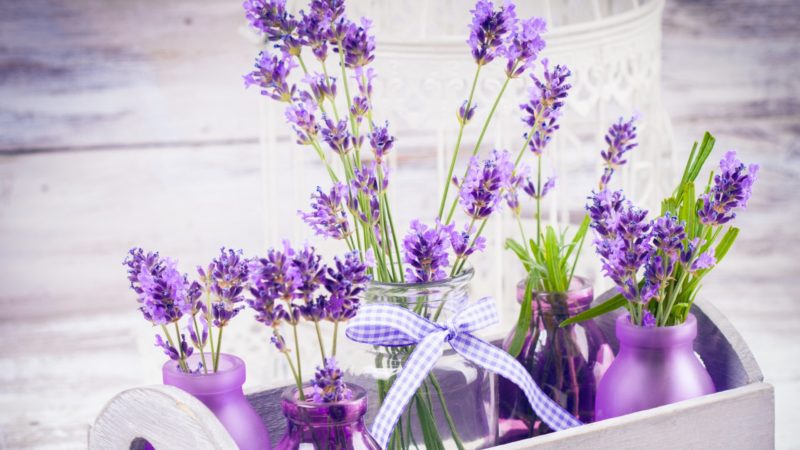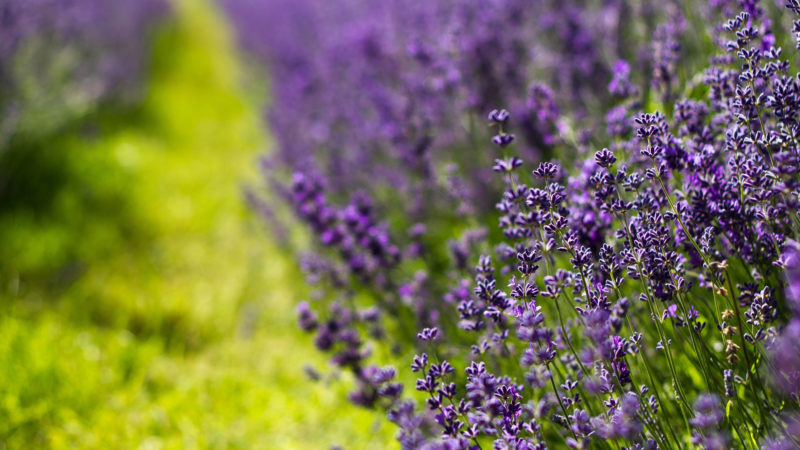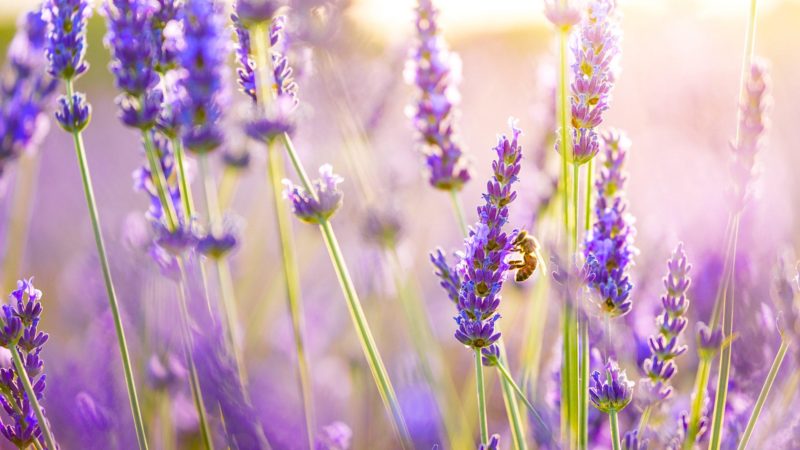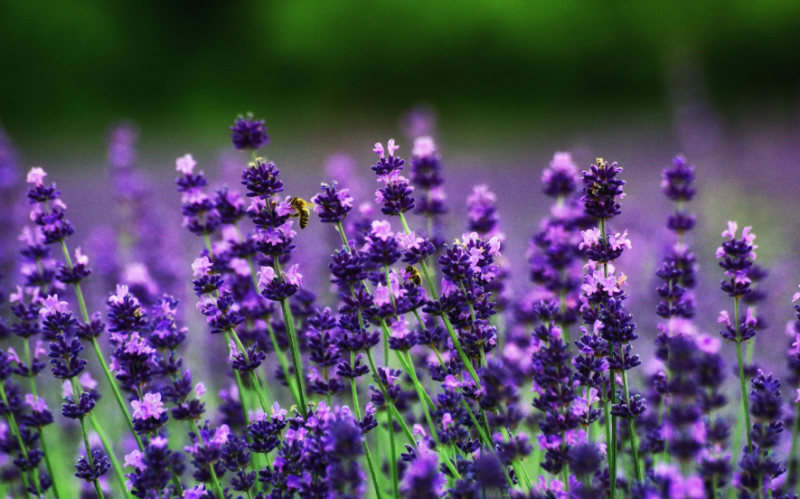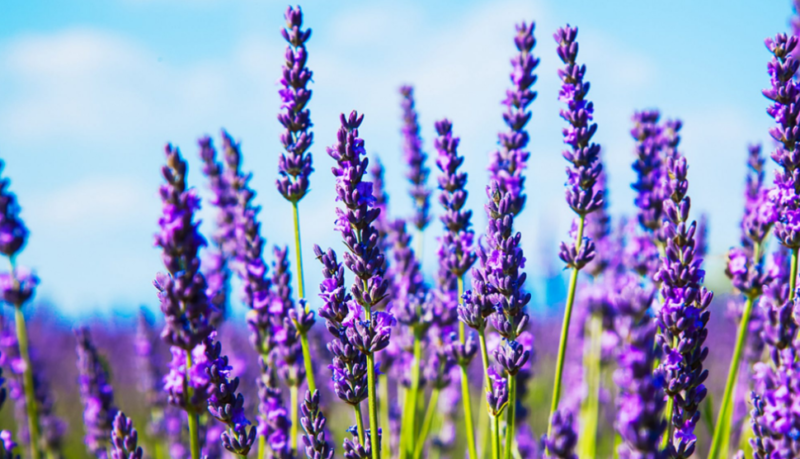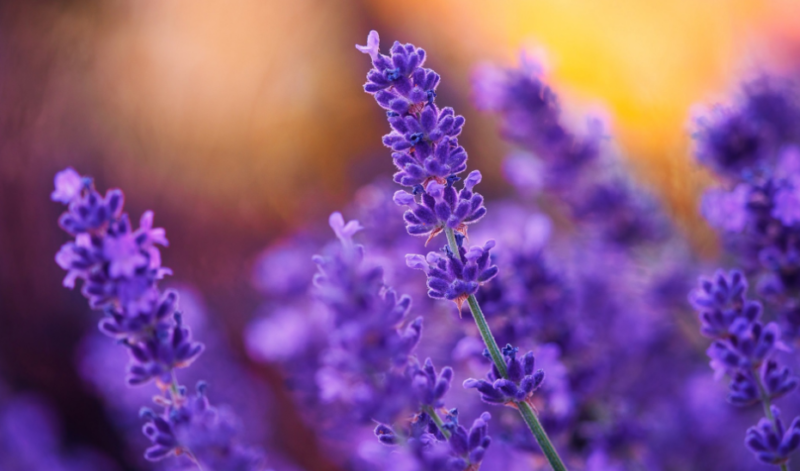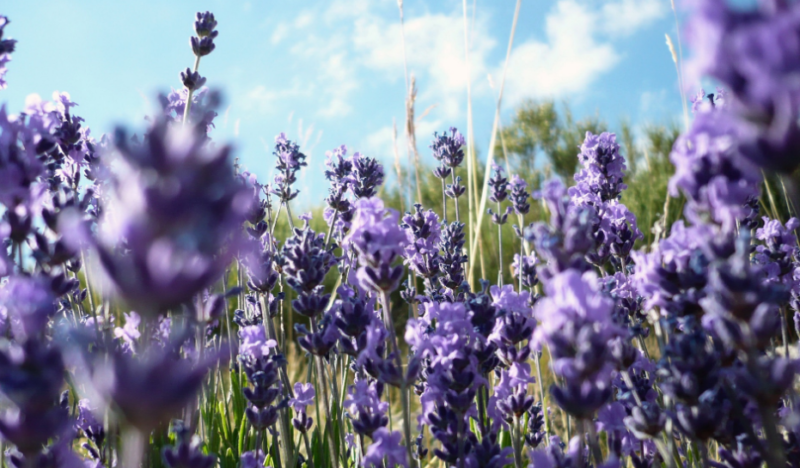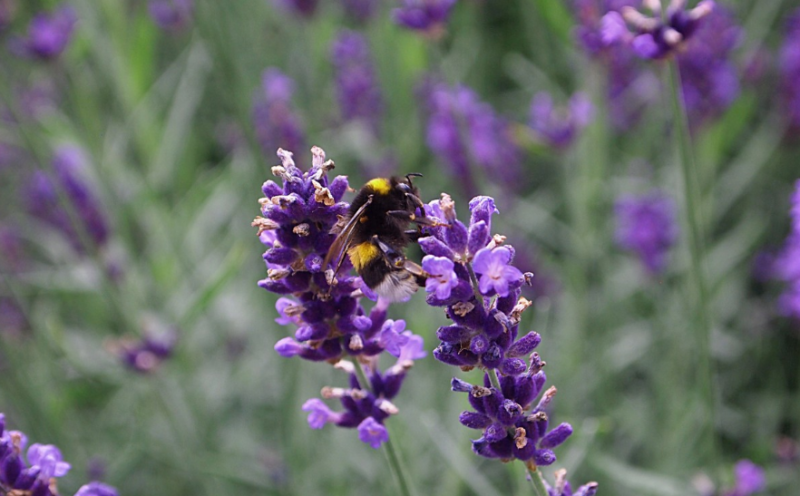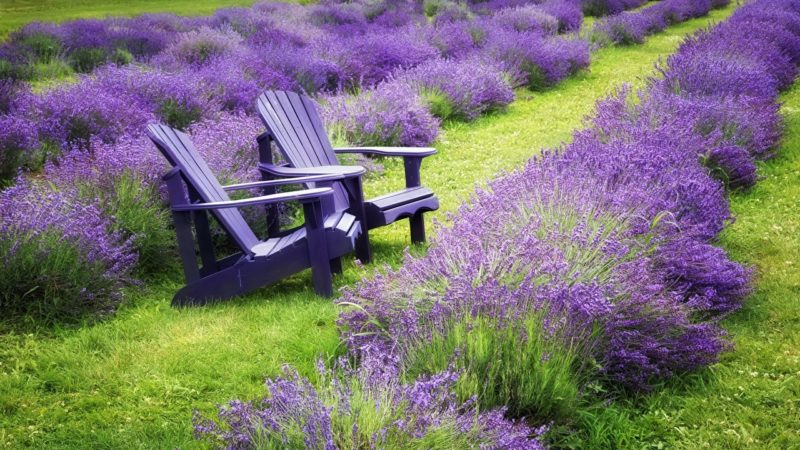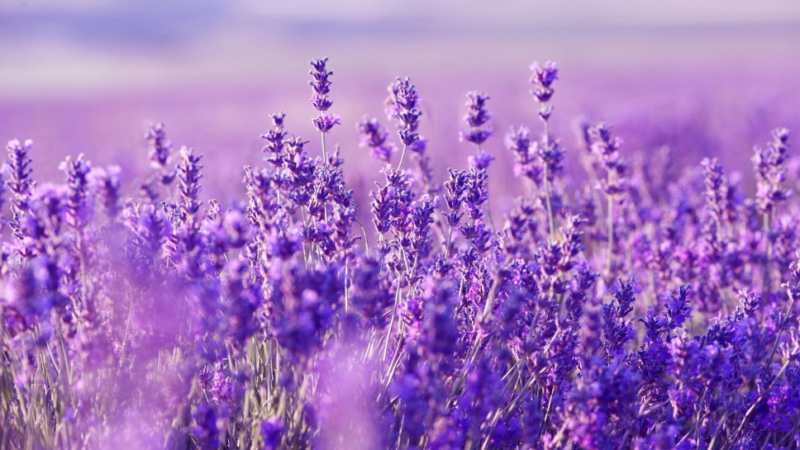A flower of unearthly beauty, exuding an amazing aroma, is increasingly found in flowerbeds of the inhabitants of our country. However, the proper planting of lavender and care in the open ground in compliance with important principles remain a mystery to many. Let us consider in more detail the features of flower growing that exist in individual Russian regions.
Material Content:
- 1 What you need to know about lavender for a successful cultivation
- 2 Varieties and types for open ground
- 3 The nuances of planting lavender in the garden
- 4 Features of care in different regions of Russia
- 5 Getting rid of diseases and pests
- 6 Recommendations for growing in Siberia, the Urals, in the suburbs
What you need to know about lavender for a successful cultivation
This amazing plant needs sunlight and room for full development. An important stage is the preparation of seeds for sowing.
They are subjected to the process of stratification:
- seed material sprinkled with sawdust or sand;
- then hardened, keeping a whole month at a temperature of +5 degrees, often a refrigerator is used for this purpose.
An interesting method of reproduction is with the help of stem branches. A branch of a bush is crushed to the ground by some kind of load. After the appearance of the roots, it can be disconnected from the mother plant and planted in a separate place.
Of fertilizers, the flower prefers potash compounds. Nitrogen mixtures are better to exclude, since their use causes the growth of the leaf part, and the colors become less.
Varieties and types for open ground
There are more than 20 varieties of this plant.
The most popular varieties include:
- Broadleaf lavender is the ancestor of all decorative species. The variety is notable for a strong and not very pleasant aroma, as well as a wide variety of color variations.
- Narrow-leaved species - this variety is resistant to low temperatures. Externally, the flower is a low bush with gray-green narrow leaves. Flowering occurs in July and June.
- The hybrid form is the largest species, reaching two meters and having the most beautiful inflorescences. In fact, it is a natural hybrid of the two previous varieties. It is as cold-resistant as narrow-leaved lavender. The active flowering period is in July. This species is grown on an industrial scale.
- Jagged lavender is a thermophilic variety with large flowers of lilac shades and silver leaves. It is more advisable to grow it indoors, but in a warm climate you can plant it in open ground.
The nuances of planting lavender in the garden
Methods of propagation of a flower:
- seeds;
- by dividing the bush;
- cuttings;
- layering.
Seeds can retain their properties for a long time if they are in a sealed container.
Before sowing, they are subjected to stratification - hardening at a temperature of +5 degrees.
Selection of material for planting
When choosing seed material, it is important to pay attention to the producer, giving preference only to trusted companies. The price may also be indicative. Too low a cost often indicates poor-quality products and possible seed changes.
Comprehensive information about the manufacturing company, characteristics of the plant itself and the nuances of its cultivation should be provided on the product packaging.
If desired, you can prepare the material yourself. To do this, you need to purchase or collect the blossoming inflorescences, dry them and save the showered seeds. They do not have to be used right away. Even after a few years, the seed does not lose its germination when stored properly.
When is it better to plant lavender
Before winter, plants are planted in late October. Seeds should not be deeply buried. Ready-made beds are necessarily mulched for additional protection for periods of severe cold.
Do not wait for the appearance of the first shoots in early spring. Usually this process is delayed until May, or even the beginning of summer. It all depends on the degree of warming of the air at night.
Spring sowing of seeds occurs in May, when the weather is even, and the return of cold weather is unlikely. All material is subjected to artificial stratification.
Soil and place for a plant
This amazing flower will be an excellent decoration of paths, alpine slides and borders. Many gardeners grow lavender in a pot.
- When breeding in open ground, a well-lit area should be chosen.
- Excess moisture is detrimental to the plant, so you should be wary of areas with a high level of groundwater and wetlands.
- Dry sandy loamy soil or loamy soil, complemented by good drainage, is ideal as an ideal earthen base.
If there are no comfortable conditions on the selected site, they can be provided independently. This will require a small hill, in the depression of which a layer of sand with expanded clay is placed.
The acidity level should be between 6.5 and 7.5 pH. At high rates, it is necessary to sprinkle the soil with crushed lime.
Landing site is prepared in advance. Dig the soil to a depth of at least 20 cm, loosen well and make compost or peat.
Spring and fall planting
Sowing in autumn is carried out on a hill 40 cm high. Holes with a depth of up to 25 cm are drilled in it at a distance of 40 cm to 1 meter from each other. Everything is determined by the plant variety. If seedlings are used, then about an hour before direct placement in the soil, the roots of the seedlings are lowered into the water, and the upper part is cut off. During planting, mineral fertilizers are introduced into the ground.However, at this time of the year, the bush is replanted only in the southern regions of the country.
In the middle lane, plants are planted in May, when the threat of repeated frost passes.
- Seedlings are located at a distance of about 80 cm from each other. If the selected variety is tall, then it will require more space.
- The depth of the dug hole should correspond to the size of the root system of the seedling.
- The roots themselves are slightly trimmed, after which the plant is placed in the hole and filled up with a deepening of the root neck to 5 cm.
- Planted flowers should be carefully watered.
Features of care in different regions of Russia
Some nuances of shrub care are determined by the climatic conditions of the region.
Watering mode
Due to its unpretentiousness, lavender in Siberia is growing no less successfully than in other regions, requiring only moderate watering. Orientation is on the topsoil, which should dry. If the plant is on a slope, it is advisable to form watering holes next to it to collect moisture. During flowering, the frequency of watering doubles, and after its completion is again minimized again.
When growing in a milder climate of medium latitude, the shrub should be regularly and abundantly watered, increasing the amount of moisture in the hot season. To better retain water in the soil, mulching should be carried out, covering the ground with a peat layer.
The better to fertilize and feed
Lavender needs additional recharge in the spring and summer during preparation for flowering.
Before the start of the growing season, the plant can be fed with a urea solution, diluting 0.5 tbsp. tablespoons in 5 liters of water. Fertilizers of organic origin (for example, "Rossa Universal") applied during the flowering period are perfect. In addition, the Agricola universal complex mixture is often used.
Lavender haircut
When growing lavender in an area with long harsh winters, shrub pruning is carried out in the spring. Dry and damaged parts of the stem are removed. On each plant, 5-6 green shoots should be preserved.
Given the severe Siberian frosts, pruning of shrubs in the autumn is not recommended in this region. It is thanks to the abundance of stems that the flower is protected from adverse weather conditions.
In the process of cutting, it is important to observe the measure. A small treatment forms and rejuvenates the bush. However, if too much of the stem is cut, then the flower may eventually die.
In regions with milder climates, pruning of shrubs in the spring-autumn period, preferably after flowering, is permissible. As a result, the shoots are shortened by about 5 cm. Such a measure is often taken against old plants (7-10 years) in order to rejuvenate them.
Shelter for the winter
The harsh Siberian climate is dangerous for a heat-loving flower. Therefore, preparing lavender for winter is an important step in caring for it in this region.
Usually, burlap or agrofiber is used for shelter. For the best effect, you can additionally take branches of any coniferous tree.
Fallen foliage and compost are not used here. This is due to the fact that under them the formation of a wet microclimate is possible, causing rotting of the root system.
In the middle zone, this southern culture also requires warming in the cold season. For this, spruce branches, non-woven material and other types of protection that freely pass air are perfect. From above, the shelter is additionally covered with snow.
How to propagate lavender
Since when growing lavender in Siberia using seeds, its flowering occurs only in the second and even third year of life, it is better to propagate the shrub vegetatively. This will greatly speed up the process.
Regardless of geographical location, flowers can be propagated by dividing an adult plant into independent seedlings with a separate root system.The mother bush before winter is properly spudded, pruning shoots at a distance of 10 cm. In spring, the procedure is repeated to achieve the appearance of young shoots.
Getting rid of diseases and pests
One of the main advantages of lavender is its unique aroma that insects cannot tolerate. In addition, essential oils contain substances that protect the plant from infections. But still, you should not lose vigilance by regularly checking the stems and leaves of the bush for the presence of diseases.
- With the formation of mucus with bubbles resembling saliva, it is necessary to douse the plant with a strong stream of water in order to wash away the slobbery pennies that have settled on the bush.
- Dangerous for lavender and rainbow beetle eating its leaves. This parasite is known for its high-speed reproduction. One individual in a short time can spawn a whole colony. Insects should be collected and burned, and the bush after them must be treated with insecticides.
- In conditions of high humidity, gray rot often forms. For disease-resistant lavender, it is not as dangerous as for the nearest plants, to which this infectious disease spreads very quickly. Affected areas should be cut off and immediately burned.
To prevent the appearance of dangerous pests, it is important to provide the flowers with optimal conditions for active growth.
Recommendations for growing in Siberia, the Urals, in the suburbs
- Of great importance when breeding a plant in a harsh Siberian climate is the warming of bushes for the winter and their proper watering.
- Lavender in the Urals also needs good shelter, especially in cold winters. Shrubs in this region are grown on the site only by planting seedlings. Therefore, it is worth paying special attention to the care of young seedlings.
- In early summer, it is time to carefully care for lavender in the suburbs. This is the period of preparation of the land for sowing seed, active fertilizer and watering the first seedlings. From the competent actions of the gardener depends on the further growth and development of the plant, as well as its resistance to infectious diseases.
Lavender is a unique flower that, despite its belonging to southern cultures, tolerates the cold and harsh climate of the northern latitudes. Adhering to the recommendations for caring for this plant, you can enjoy its bright inflorescences and pleasant aroma for a long time.



